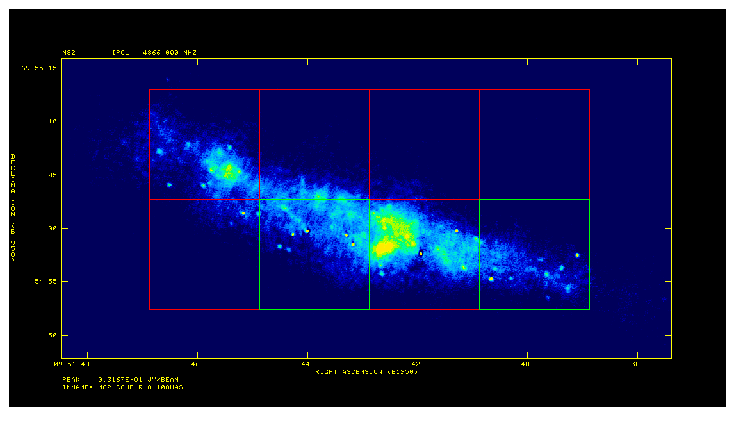

 Click here for press pack.
Click here for press pack.
At the full MERLIN 5GHz resolution, all the compact SNR are resolved (Beam=50 mas). However, the complex extended emission can only be reliably imaged at the slightly lower angular resolution of 100 mas as shown in the colour image below. We have measured the sizes of 35 identifiable SNR within M82 and present the histogram of their diameters below. A comparison of this figure with the equivilent distribution in Muxlow et al. (1994) shows that the earlier investigation was indeed insensitive to older remnants with sizes larger than about 3 pc as noted at that time. The present sample appears complete to diameters around 4.5 to 5 pc. Muxlow et al (1994) found no statistical evidence to suggest that the SNR sizes expand other than linearly. An interim analysis of this latest image shows, however, that the inclusion of older larger SNR provides strong evidence of a slowdown in the expansion rate. The sizes measured in the latest image for the smaller SNR agree with the earlier image but there are many more detected remnants in the diameter range 3 to 5 pc. A plot of the cumulative number diameter distribution is also shown
It is clear that we are failing to detect SNR with sizes greater than about 5 pc, but for the most compact 35 SNR with diameters less than 5 pc there is evidence that the rate of expansion is slowing as D is proportional to T to the power 0.6 which is slower than for pure Sedov expansion (D is proportional to T to the power 0.4) implying that even the largest and oldest of the 30 SNR studied cannot have swept up more ISM material than their original ejected mass. The measured value is however, lower than the predicted relation for very young SNR D is proportional to T to the power 0.8 (Chevalier, 1982). Assuming that the smallest, most luminous, and youngest SNR (41.95+575) is typical of the population in M82 with a zero age date of 1957, we derive a supernova rate in M82 of 0.03 per year.
The image below is an interactive representation of the starburst galaxy M82. Clicking on any of the red or green squares will link to a "blow-up" of that region. Note that the green squares contain further zoom areas.
 Click here for original image.
Click here for original image.

 Click here for a histogram of SNR diameters.
Click here for a histogram of SNR diameters.
 Click here for a cumulative number distribution of SNR diameters.
Click here for a cumulative number distribution of SNR diameters.
SNR with diameters greater than 5 pc are not in general visible on our
latest MERLIN+VLA C-Band image. This can be readily explained since at
a diameter of around 5 pc the average surface brightness of SNR
matches that of the extended background in M82. SNR larger than this
thus become blended with this background and cannot separated from
it.
References
Chevalier R A (1982) Apj 259 , 302
Muxlow et al (1994) MNRAS 266 , 455